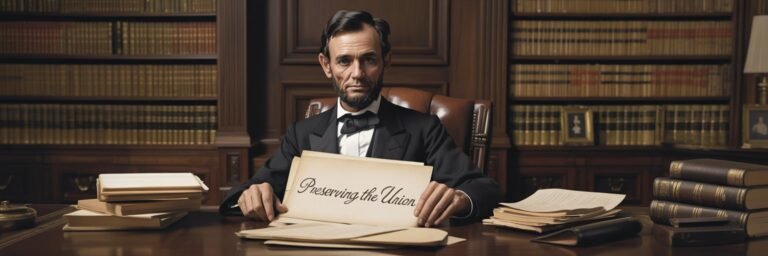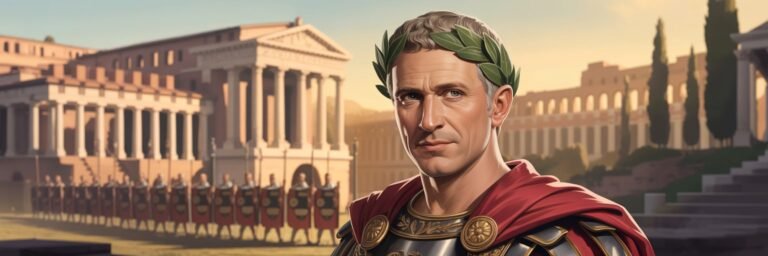INTRODUCTION
From childhood, we are educated about historical figures who shaped the world we know today. Yet, the conventional depictions of these individuals often resemble heroes from legends more than they do real people. In this article, we will explore the hidden facets of famous characters from the past – those lesser-known anecdotes, controversial theories, and insightful perspectives that rehumanize them. The objective is not to tarnish these personalities’ images but to present a more holistic overview of their lives and legacies. With a magnifying glass to history, expect to encounter the unexpected.
HISTORICAL BACKGROUND
Through time, historical narrative becomes akin to Chinese whispers; each new generation may distort or embellish details in retelling, resulting in today’s ‘received history’ potentially straying far from the truth. Arguably, it’s this amorphous aspect of history that make it so endlessly fascinating. To focus this exploration, three well-known figures will be examined: Christopher Columbus; Marie Antoinette; and Albert Einstein. Previously depicted as an intrepid explorer, a spendthrift queen, and a brilliant physicist, these images will come under scrutiny as we delve deeper into their lives.
THEORIES AND INTERPRETATIONS
Columbus, remembered for his 1492 voyage which inadvertently resulted in the ‘discovery’ of America, is often celebrated as a pioneering explorer. However, his reputation has been marred by recent interpretations of his diaries and letters depicting him as a brutal conqueror, enforcing heavy taxes, slavery and violence upon indigenous populations.
Marie Antoinette, on the other hand, is widely known for her supposed flippant comment, “Let them eat cake,” when told of bread shortages in pre-Revolutionary France. Yet, in Antonia Fraser’s sympathetic biography, she argues that these words were falsely ascribed to her. Fraser states that Antoinette was sensitive to France’s economic plight, even reducing court expenditures under her reign.
Then there’s Einstein, the genius who developed the Theory of Relativity. It is less common knowledge that Einstein’s first wife, Mileva Maric, was herself a gifted physicist, and some historians like Evan Harris Walker even suggest she co-authored the famous E = mc^2 equation.
MYSTERIES AND CONTROVERSIES
The life of Christopher Columbus remains as controversial as it gets. Letter transcripts sent to the Spanish Monarchs suggest an ill-treatment of indigenous people. Some historians question whether Columbus never intended to explore new lands, rather intending to amass wealth and power.
Marie Antoinette’s controversial life story is filled with many inconsistencies. Popularized depictions of Antoinette cast her as a disconnected monarch, wilfully ignorant of her people’s struggles. In contrast, her personal letters and notes indicate compassion and genuine concern for France’s people.
Finally, the controversy as to Mileva’s supposed contribution to Einstein’s work. While some dismiss Walker’s claims as mere speculation, others argue that traditional ‘great man’ historical perspectives dismiss the input of those surrounding the ‘great men’.
SYMBOLISM AND CULTURAL SIGNIFICANCE
Columbus is emblematic of the Age of Discovery, a symbol of humankind’s insatiable curiosity and bravery. Yet, more recently, he symbolises colonial oppression, reminding us how history’s ‘winners’ can manipulate narratives.
Marie Antoinette’s supposed quote, “Let them eat cake,” has become a cultural trope for indifference towards the suffering of others, even if overwhelming evidence suggests she never uttered those words.
Einstein and his theory of relativity have become pop-culture shorthand for intelligence. Yet, the narrative of Einstein as the lone genius undermines the collaborative nature of scientific advancement. If Maric did contribute to his theories, it re-emphasises science as a collective endeavour.
MODERN INVESTIGATIONS
Modern historians continue to dissect these characters’ lives using innovative methods. For instance, DNA testing on Columbus’s remains seeks to confirm more accurately his exact origins, giving more precise insights into his motives and behaviour.
Marie Antoinette’s affair with the Swedish diplomat Axel von Fersen has been revisited, with modern historians exploring their personal letters attempting to ascertain the nature of their relationship.
Advancements in AI text analysis have been deployed to scrutinise manuscripts of Albert Einstein – and indeed Mileva Maric – to try and glean more about their unique intellectual collaboration.
LEGACY AND CONCLUSION
The legacy of these historical figures is extensive, if not complex. Columbus’s dark side doesn’t erase his impact on global history, but provides a cautionary tale about the human cost of exploration and exploitation.
Antoinette’s legacy goes beyond her alleged decadence or ignorance. She died under the blade of the guillotine, a tragic figure symbolic of the fall of the Ancien Régime. Her negative portrayal may be largely unwarranted, serving as a reminder to scrutinise ‘accepted’ historical narratives.
Einstein’s legacy is one of intellectual brilliance. If his first wife did indeed contribute to his theories, she too deserves recognition. Their story underlines the importance of collaboration in science and potentially challenges the pervasive ‘lone genius’ trope.
In conclusion, every historical figure – famous or otherwise – comes with varying narratives. Their lives, shrouded in mystery, controversy, and varying interpretations, serve as lasting reminders that history is rarely as black-and-white as it first appears. Their legacy, coloured by these myriad details, continues to evolve with every new investigation and interpretation.


